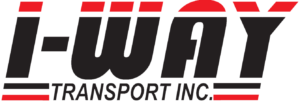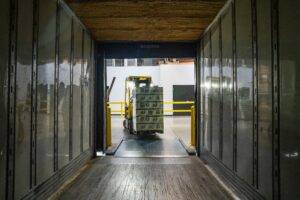The success of any business rests on its ability to move products quickly and efficiently from point A to point B. This is especially true for businesses that rely on just-in-time production, where inventory is constantly moving and being replenished. As companies and consumers span borders and time zones, the need for an agile and responsive supply chain has never been greater.
The efficiency of your company’s supply chain has a direct impact on your bottom line. The cost of inventory, the time it takes to get products to market, and the quality of your customer service all depend on how well your supply chain is managed. Given the importance of an effective supply chain, it’s surprising that so many companies have yet to take advantage of one of the simplest and most effective ways to improve their supply chain: the cross dock warehouse.
What is a Cross Dock Warehouse?
A cross dock warehouse is a type of facility where products coming in from multiple sources are consolidated and shipped to multiple destinations. Cross docking allows businesses to receive inventory from suppliers and get it into the hands of customers quickly, without the need for extensive storage or order picking.
In a traditional warehouse, inbound shipments are received and stored in a designated area until they are needed for an outbound shipment. This can involve a lot of time and effort, as products may need to be retrieved from different parts of the warehouse when an order is placed.
In a cross dock warehouse, inbound shipments are consolidated and then loaded directly onto outbound vehicles. This eliminates the need for storage and can help reduce the time and cost of shipping.
How Does Cross Docking Improve the Supply Chain?
There are a number of ways in which cross docking can improve the efficiency of your supply chain.
1. Cross Docking Reduces the Cost of Shipping
Cross docking can help to reduce the cost of shipping by eliminating the need for storage. When products are received at a cross dock warehouse, they are sorted and loaded directly onto outbound vehicles. This eliminates the need for warehousing, saving your business money on rent, utilities, and labor.
2. Cross Docking Reduces the Time it Takes to Get Products to Market
Cross docking can also help reduce the time it takes to get products to market. In a traditional warehouse, inbound shipments are received and stored until needed for an outbound shipment. This can involve a lot of time and effort, as products may need to be retrieved from different parts of the warehouse when an order is placed.
In a cross dock warehouse, inbound shipments are consolidated and loaded directly onto outbound vehicles. This eliminates the need for storage and can help reduce the time it takes to get products to market.
3. Cross Docking Increases Service Levels
Minimizing product handling, lowering the cost to ship, and reducing the time it takes to get products to market can all help to increase service levels. In B2B and B2C markets alike, customers are increasingly demanding faster delivery times. Cross docking can help your business meet these demands and improve customer satisfaction.
4. Cross Docking Improves Inventory Control
Cross docking is a highly efficient inventory control method where inventory arrives at a loading dock and is immediately loaded onto outbound trucks without being stored in a warehouse first. This eliminates the need for unnecessary handling of the inventory and helps to ensure that products are not damaged or lost in transit. Additionally, when products are stored for long periods of time, they are susceptible to damage from pests, moisture, or other environmental factors. By keeping products moving through the supply chain, cross docking can help to ensure that inventory remains in good condition.

Understanding Cross Dock Operations
The key to making a cross dock warehouse work is understanding inventory flow. Inbound shipments arrive at the warehouse and are sorted according to destination. These products are then moved to the loading dock, loaded onto outbound vehicles.
A central control system directs the movement of inventory in a cross dock warehouse. This system tracks inbound and outbound shipments and determines the most efficient way to move products through the warehouse. In a cross-docking scenario, the control system would direct inbound shipments to the loading dock as soon as they arrive and then assign outbound vehicles to specific products. At the initial stage of a cross-dock operation, cross docking uses the same infrastructure as a traditional warehouse. Equipment such as conveyor belts, sorting systems, and loading docks are used to move products from inbound to outbound shipments.
One common example is transferring pallets of finished goods from a manufacturing facility to a distribution center. The inventory is unloaded from the inbound trucks, sorted, and loaded onto outbound trucks bound for retailers or customers.
An effective cross dock operation will have a clear understanding of the following:
Inbound shipments: what products are being shipped, and from where?
Outbound shipments: what products need to be shipped, and where?
Inventory: what products are in the warehouse, and where are they located?
Loading dock: where are the products being loaded onto outbound vehicles?
With the right warehouse management system in place, businesses can keep track of their inventory in real-time and make changes to their operations as needed.
What Types of Business Are Suitable for a Cross Dock Warehouse?
E-commerce businesses: E-commerce businesses typically receive a large number of small shipments from multiple suppliers. By consolidating these shipments into larger outbound orders, e-commerce businesses can save on shipping costs and reduce the number of individual shipping labels required. In addition, cross docking can help improve order accuracy and reduce the risk of inventory discrepancies.
Retailers with multiple store locations: Retailers with multiple store locations often need to ship products from central warehouses to individual stores. Cross docking can help streamline this process by consolidating inbound shipments and then redistributing them to the appropriate store locations. This can help to improve delivery times and reduce shipping costs.
Businesses with time-sensitive shipments: Businesses that need to ship time-sensitive products (such as food or pharmaceuticals) can benefit from cross docking. By consolidating inbound shipments and loading them onto outbound vehicles, businesses can ensure that products are shipped as quickly as possible. This can help to improve customer satisfaction and reduce the risk of products being damaged or spoiled.
Food and beverage companies: Food and beverage companies often need to ship perishable products from central warehouses to individual stores. Cross docking can help to streamline this process by consolidating inbound shipments and then redistributing them to the appropriate store locations. This can help to improve delivery times and reduce shipping costs.
3PLs: Third-party logistics providers (3PLs) are businesses that provide logistics services to other businesses. 3PLs often use cross docking to consolidate shipments from multiple clients and then redistribute them to the appropriate destinations. This can help to improve delivery times and reduce shipping costs.
Streamline Your Supply Chain With a Cross Dock Warehouse
Retailers, distributors, manufacturers, and other businesses can all benefit from cross docking. In the modern business world, time is of the essence. The faster you can get your product to market, the better. Nevertheless it’s important not to see this as a cure-all solution; implementing such operations requires careful examination of your industry in order to work out whether it will be a good fit for your business.
If you need help with your warehousing and distribution, i-Way Transport is a trucking company that specializes in logistics and other warehousing services. Our comprehensive services are designed to streamline your supply chain and help your business operate more efficiently. Contact us today to learn more about how we can help you improve your operations.




